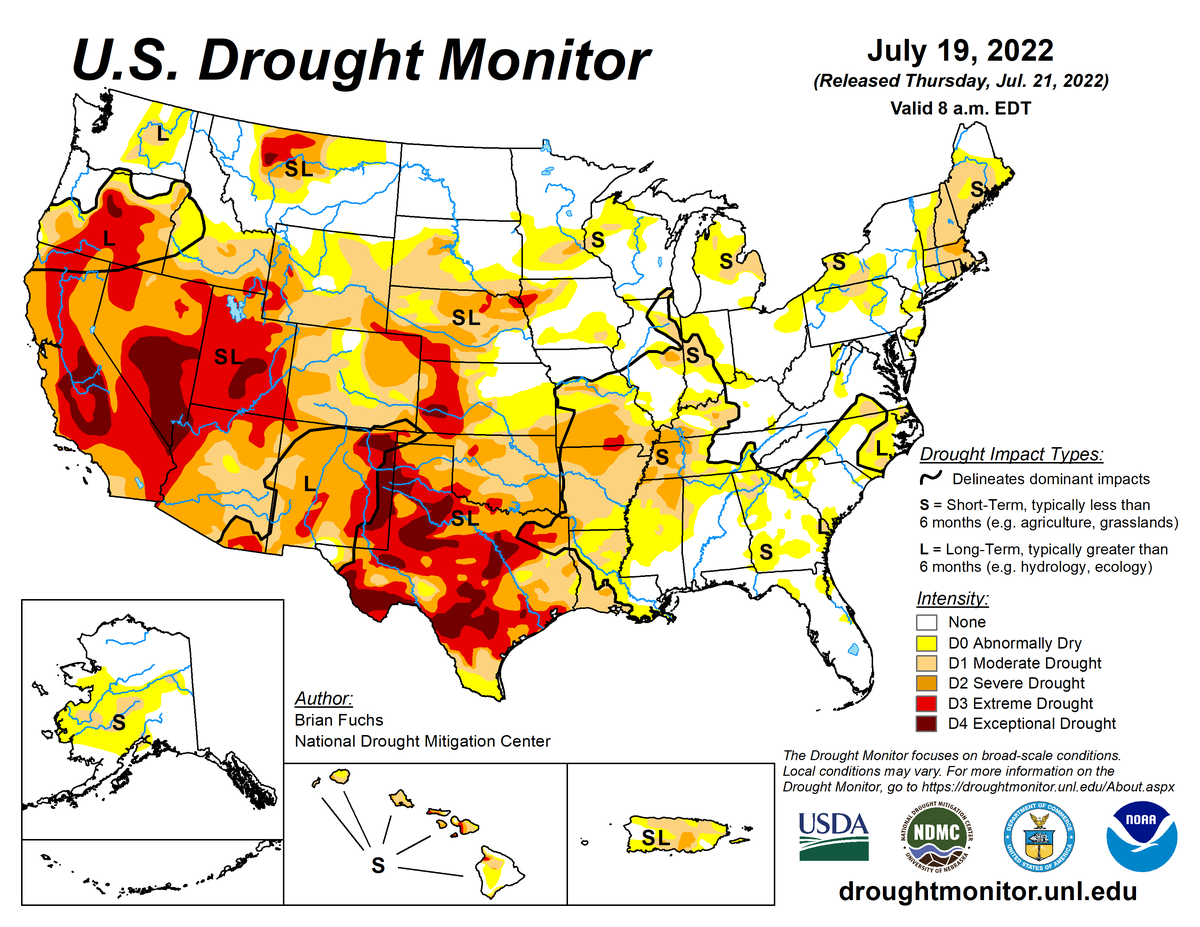
According to the July 19, 2022, U.S. Drought Monitor, moderate to exceptional drought covers 44.6% of the United States including Puerto Rico, a decrease from last week’s 45.0%. The worst drought categories (extreme to exceptional drought) increased from 14.4% last week to 15.1%.
A strong subtropical high pressure ridge continued across the southern half of the contiguous United States, especially over the Southwest and southern Plains. Pacific weather systems migrated in the jet stream flow across the northern part of the contiguous United States and southern Canada, mostly along the northern and eastern edge of the subtropical ridge. The high pressure inhibited precipitation and kept temperatures warmer than normal, while the Pacific systems dragged surface lows and cold fronts along the northern tier states.
Some of the fronts penetrated into the Southeast and stalled out over the eastern third of the country. This pattern resulted in the most intense heat being focused across the interior West, Great Plains, and southern to Mid-Mississippi Valley. Clouds and rain associated with the fronts gave the coastal Northwest, southern Great Lakes, and Middle Gulf of Mexico Coast to coastal Carolinas a near- to cooler-than-normal week.
The North American monsoon generated above-normal precipitation over a few parts of the Southwest, while fronts and daytime heating triggered areas of above-normal rain across parts of the Lower Mississippi Valley to southern Great Lakes, then eastward to the East Coast. But much of the West and Great Plains, and parts of the South and East were drier than normal for the week. The continued excessive heat and dryness intensified the flash drought that has been developing in the central to southern Plains.
Drought and abnormal dryness contracted where it rained, especially in Montana, the Ohio Valley, Southeast, and in Alaska. But widespread expansion or intensification of drought and abnormal dryness continued from the southern and central Plains to Mid-Mississippi Valley, and in parts of the eastern Great Lakes. Nationally, expansion exceeded contraction for the contiguous United States, with the nationwide moderate to exceptional drought area increasing this week. But when Alaska, Hawaii, and Puerto Rico are included, the nationwide moderate to exceptional drought area decreased.
Abnormal dryness and drought are currently affecting over 178 million people across the United States including Puerto Rico—about 57.4% of the population

The full U.S. Drought Monitor weekly update is available from Drought.gov.
In addition to Drought.gov, you can find further information on the current drought as well as on this week’s Drought Monitor update at the National Drought Mitigation Center.
The most recent U.S. Drought Outlook is available from NOAA’s Climate Prediction Center and the U.S. Department of Agriculture provides information about the drought’s influence on crops and livestock.
For additional drought information, follow #DroughtMonitor on Facebook and Twitter.




